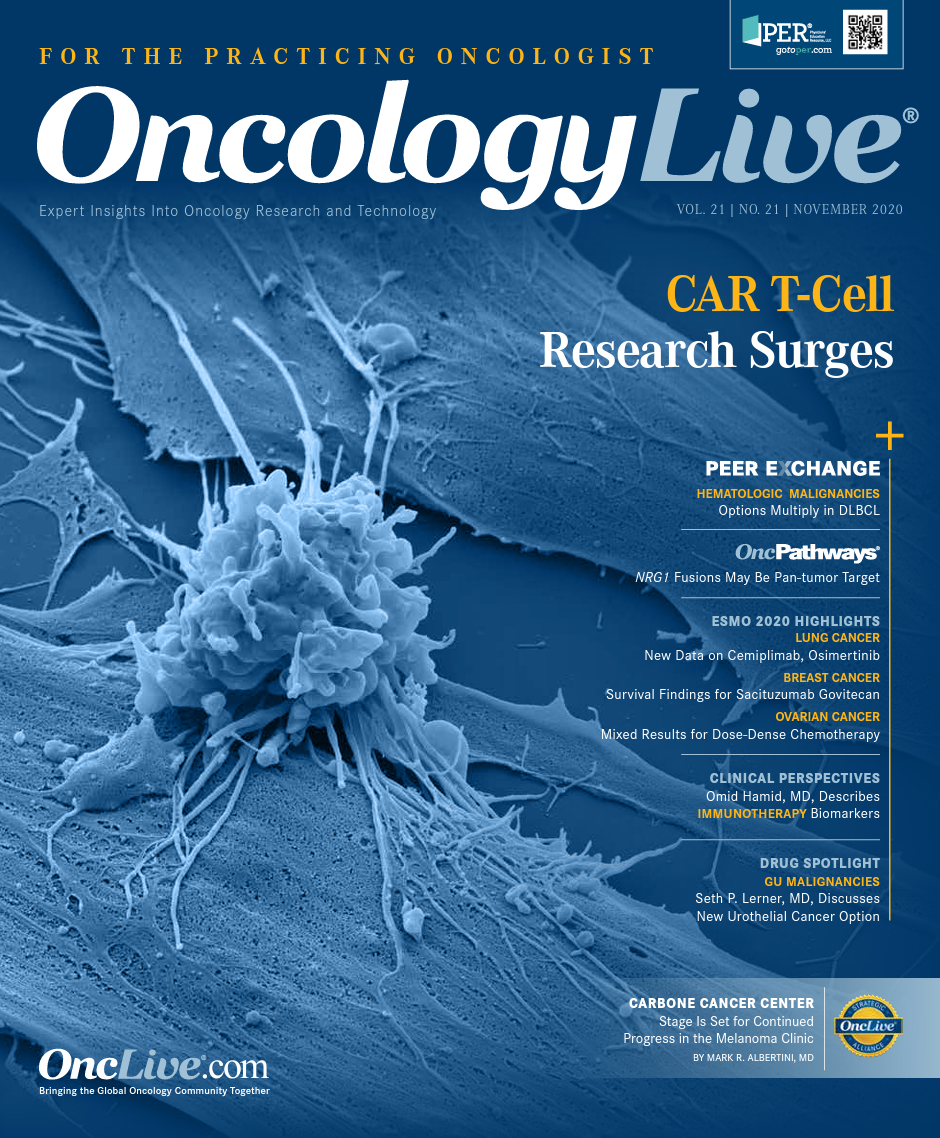Publication
Article
First Nonoperative Option Arrives for Low-Grade UTUC
Author(s):
Seth P. Lerner, MD, FACS, discusses the complexities of treating LG-UTUC and how mitomycin gel for instillation addresses an unmet need in this space.
Seth P. Lerner, MD, FACS

A novel combination of cytotoxic chemotherapy and the thermal reversible mitomycin gel (Jelmyto) for instillation offers a nonsurgical treatment option for patients with low-grade upper tract urothelial cancer (LG-UTUC), who have historically undergone nephroureterectomy.
On April 15, 2020, the FDA approved mitomycin gel for instillation for adults with LG-UTUC based on complete response (CR) data from the ongoing phase 3 OLYMPUS Study (NCT02793128). Investigators enrolled 71 patients with treatment-na.ve or recurrent low-grade, noninvasive UTUC with at least 1 measurable papillary tumor (5 to ≤ 15 mm) located above the ureteropelvic junction. Patients with tumors larger than 15 mm were permitted to have tumor debulking prior to treatment.1 Fifty-eight percent of patients achieved a CR, and 46% remained in CR at 12 months.2
Mitomycin gel is a mixture of mitomycin in a sterile hydrogel with a temperature-dependent viscosity that allows reconstitution of mitomycin prior to administration and instillation of the cooled mitomycin gel into the upper urinary tract. After administration, mitomycin gel becomes semisolid at body temperature to form a drug reservoir, which allows for extended exposure of the agent.3
In an interview with OncLive., Seth P. Lerner, MD, FACS, an author on the OLYMPUS Study and director of Urologic Oncology and the Multidisciplinary Bladder Cancer Program at the Dan L Duncan Comprehensive Cancer Center at Baylor College of Medicine in Waco, Texas, discussed the complexities of treating LG-UTUC and how mitomycin gel for instillation addresses an unmet need in this space.
OncLive: Why is this a difficult patient population to treat, and what makes mitomycin gel novel in this context?
Lerner: Mitomycin gel is specifically for patients with low-grade noninvasive cancers of the renal pelvis. With the endoscopic instruments that we have, we can visualize and remove these tumors quite easily and, in many cases, biopsy them. In some cases, we can use laser or electrocautery to eliminate them. The problem is, a good number of these tumors occur in the lower pole part of the renal collecting system, and we cannot get our instruments there.
We see 2 scenarios with these patients: The tumor is not resectable either because of its amount or volume, or because it is located in a part of the kidney that is difficult to access. Oftentimes the only solution is to perform a major operation to remove the kidney.
Mitomycin is a chemotherapy drug mixed with a thermal reversible gel that we would typically use in the kidney for low-grade tumors. However, the chemotherapy drug cannot be retained in the kidney because peristalsis would carry the urine from the kidney into the bladder [and take the drug with it]. The innovation with mitomycin gel was to take a common chemotherapy that urologists have a lot of experience with in the urinary tract and formulate it with a thermoreversible gel so it stays in the kidney for up to 4 to 6 hours, allowing it to kill any tumors that might be present that we cannot see. Prior to this approval, there was a huge unmet need for these patients who, without any approved therapy, often would have to have their kidney removed.
Please describe the role the design of OLYMPUS played in tracking the efficacy of mitomycin gel.
This trial used chemoablation, which entails leaving a tumor in place to measure the effect of the chemotherapy. This was a very clever design because in a single-arm trial, you need to know that there is a tumor in place; that way, when you go back 6 weeks later to evaluate if the tumor is gone, if it is, you know that can only be because the chemotherapy was effective.
At the first disease evaluation, which was 6 weeks after the completion of 6 weekly installations, if the success rate was in the range of 15% to 20%, it would have been acceptable per the standard set by the FDA. We far exceeded those expectations: 59% of patients had no residual tumor at the first disease evaluation.
What adverse events should health care providers be aware of?
This patient population gets relatively frequent instrumentation of the urinary tract and despite use of internal stents, they are going to be at a higher risk of ureteric stenosis, which was the main significant adverse event observed in the OLYMPUS trial.
The chemotherapy drug is going to cause some inflammation, so inflammation on top of the instrumentation may have contributed to an increased risk of ureteric stenosis. However, the vast majority of these events were manageable with standard techniques that most urologists are comfortable with. For example, some of the investigators gave a short course of steroids. Due to serious stricture disease that could not be managed otherwise, some patients had to have their kidney removed. These events will be part of the informed consent process when we are treating patients.
How does mitomycin gel enact its anticancer activity?
Mitomycin is an alkylating agent that has a direct cytotoxic effect on tumors. It gets absorbed into the lining of the urinary tract, where it has the opportunity to kill the nascent cancer cells that are in various stages of carcinogenesis. We treat the entire urothelium. Our intent is to get the urothelium exposed to the chemotherapy, which is retained for several hours up in the kidney pelvis so it can have a direct cell-killing effect on any malignant cells that may not be visible by ureteroscopy.
Mitomycin is a chemotherapy drug that has been around for a long time, and it is a therapy that we have used for a few decades. Until now, it did not have an FDA-approved indication for either bladder or upper tract cancer.
References
- FDA approves mitomycin for low-grade upper tract urothelial cancer. FDA. April 15, 2020. Accessed October 7, 2020. https://www.fda.gov/drugs/resources-information-approved-drugs/ fda-approves-mitomycin-low-grade-upper-tract-urothelial-cancer
- Jelmyto. Prescribing information. UroGen Pharma; 2020. Accessed October 7, 2020. https://www.accessdata.fda.gov/drugsatfda_docs/label/2020/211728s000lbl.pdf
- Multi-discipline review. FDA. June 11, 2020. Accessed October 13, 2020. https://www.accessdata.fda.gov/drugsatfda_docs/nda/2020/211728Orig1s000MultidisciplineR.pdf










